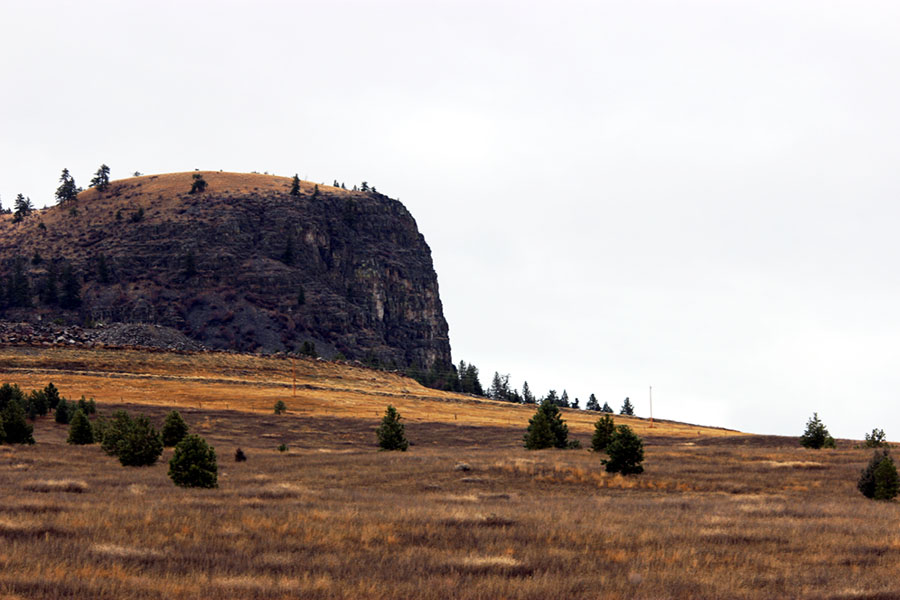Nowadays, the notion that “how something is accomplished” matters more than “what is accomplished” seems lost, save for artists and artisans. Yet among other Native American traditions, research remains a ritual.
Thus, in honoring such a tradition, this article may seem strange. For indeed, the research behind it holds more meaning than the article itself.
There are several legends about Chief Cliff. None more “right” or “wrong” than another. And despite their differences, they profess a profound commonality: Chief Cliff is undeniably a spiritual place.
One legend unfolds from the physical elements of the cliff, which climbs some 150-feet upward. Near the middle of the cliff, there is a rock formation – and illusion of perception.
A glance upward while traveling along U.S. Highway 93 reveals little. However, with a moment of pause, one can see what appears to be a woman with her hands despairingly folded before her. Legend holds she is forlorn, waiting for her warrior husband to return from battle, as she looks out from the cliff to welcome him home.
Another legend exists far beyond the realm of plain sight: it’s the legend of Chief Æneas, aka “Big Knife.”
Chief Æneas led his people during perhaps the most tumultuous time in their history. The late 19th-century saw more and more “whites” encroaching – and exploiting – the hallowed lands of the Flathead Indian Reservation and the surrounding country that had been home to Native Americans for hundreds of years before.
Chief Æneas endured incredible hardships both within and beyond the Kootenai tribe, which kept camp along the shores of Flathead Lake. For example, in the 1890s, he witnessed members of his tribe succumb to the ills of white settlers, whether disease or whiskey. And he watched as four “reds” were hung from the gallows outside the Missoula County Courthouse, in the name of justice for killing white men.
Although ironically, Chief Æneas found little more than injustice after his own son was shot and killed for allegedly breaking into a residence at Demersville – the very incident that sparked panic among the settlers and brought the “buffalo soldiers” (the 25th Regiment of the U.S. Army) to keep the peace.
Having suffered years of loss and indignity, especially among the younger generation of his tribe, legend holds that Chief Æneas rode his horse to the top of the cliff to address his tribe below. Dressed in regalia that once commanded much respect, he spoke of grief. He spoke of sorrow. And he spoke of disappointment about how the young have forgotten tradition, wisdom, and bravery.
Chief Æneas held wisdom beyond his years. He knew words were shallow.
He ceased speaking to the crowded tribe below and slowly rode his horse down the cliff.
Yet he turned suddenly – and his horse broke to full gallop.
In an unspeakable fury, Chief Æneas rode his horse off the cliff, killing himself – and a way of life – on the rocks below. His final act speaks forever louder than words (if you stop to listen).
Thus, Chief Cliff is a spiritually important place (a place where you must sojourn to “research” and discover more). It’s also a culturally important landmark (unfortunately flanked by rock quarry operations). And it’s a hallowed place that should never be forsaken (or at least, not driven past without reverence).
Jaix Chaix is a columnist and author of Flathead Valley Landmarks and other local history books that are available for sale at the Flathead Beacon at 17 Main St. in Kalispell.
